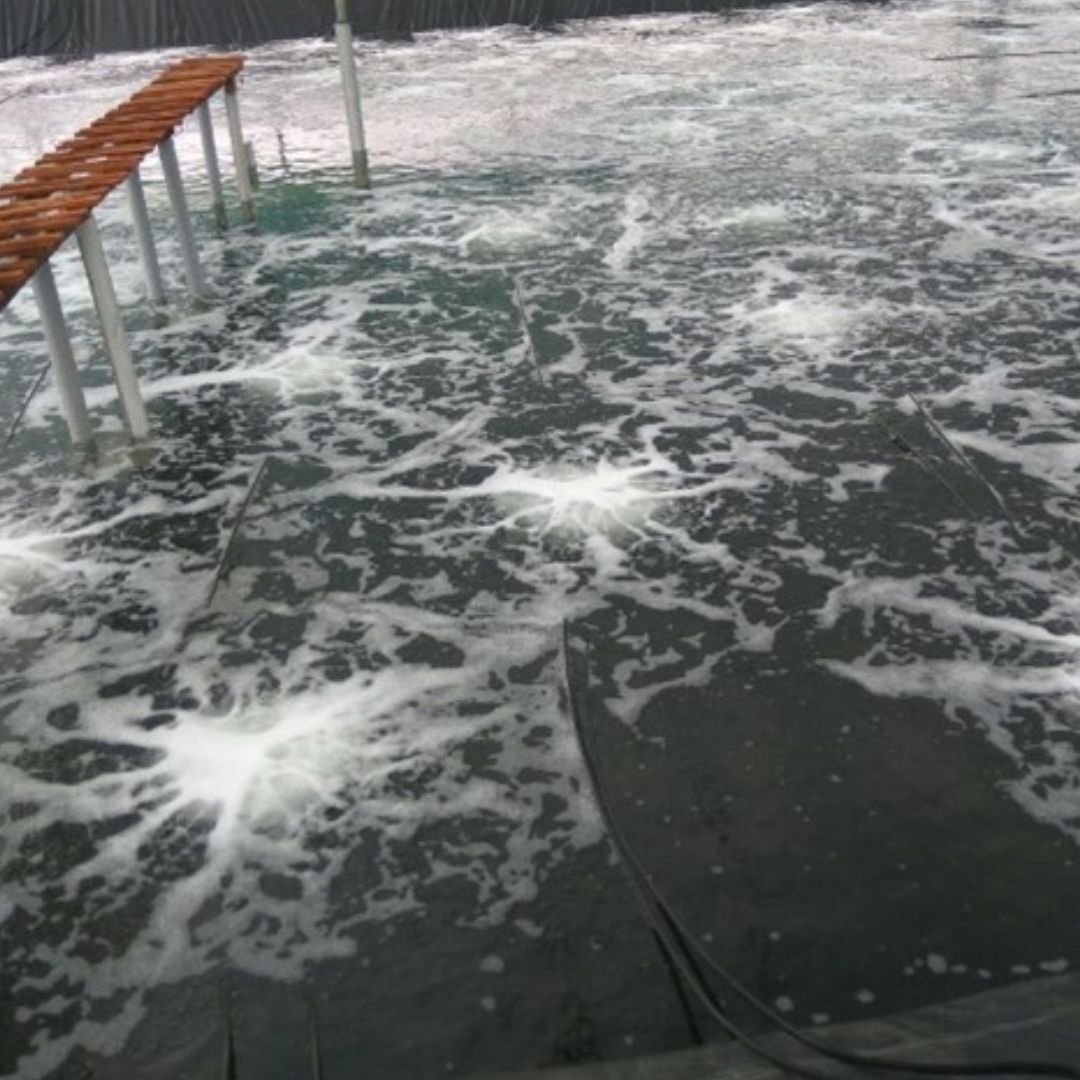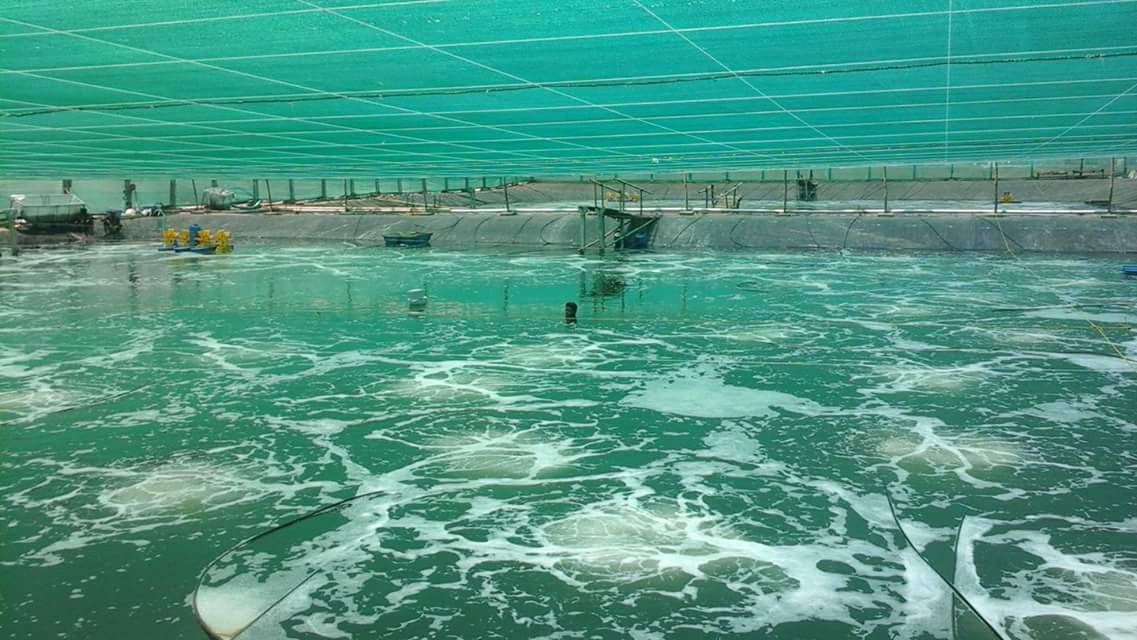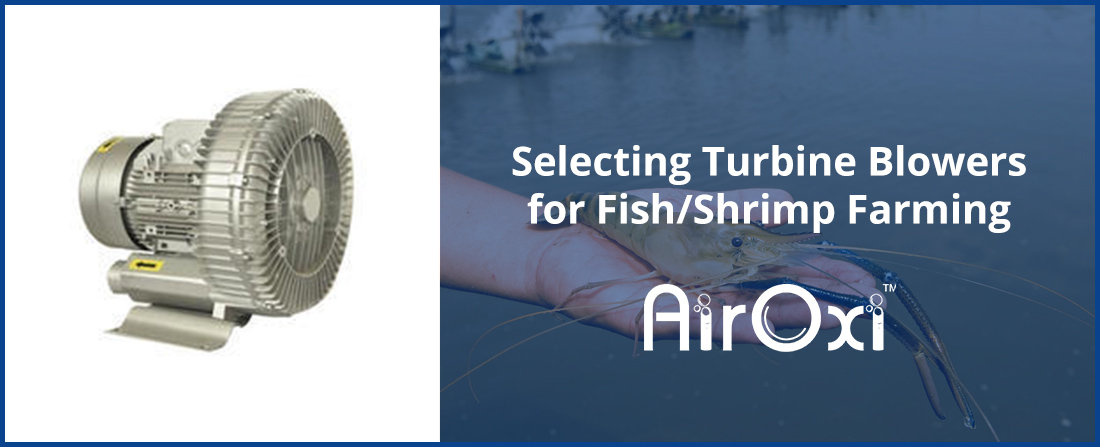Excess ammonia accumulationis highly toxic to shrimp farming systems. When the ammonia levels get higher, shrimps find it really difficult to extract energy from feed. Consequently, they become lethargic and this situation leads to coma stage and death as well. The basic source of ammonia in shrimp farming is the fish feed. When the shrimps consume feed, it is metabolized into nutrients and energy to be utilized for growth and survival. Ammonia is the major waste product discharged by shrimps after consuming the feed and diffusion from the sediment is another source for the accumulation of ammonia. It remains colorless and odorless and, checking the water quality is the only method available to identify the presence of ammonia. It is always advisable to make use of highly advanced aeration solutions to increase DO levels and reduce ammonia effectively.
The impact of dissolved oxygen on shrimp farming
Dissolved oxygen (DO) is a very vital factor in shrimp production. Reduced amount of dissolved oxygen in the water results in the death of the shrimp. The most ideal levels of DO for shrimp are 5 parts per million (ppm) or above. The depth of the water plays a prominent role in maintaining the correct levels of oxygen concentration. When salinity and temperature come down, DO also comes down. If you use chemicals excessively for eliminating insecticides and algae, the aquatic plants die fast and it leads to lowered dissolved oxygen as well. Air saturated water also causes a negative impact on the shrimps. The saturated air enters the circulatory system of the shrimps and bubbles are formed to disrupt the blood flow. This situation results in the death of the fish. The water does not have adequate amount of dissolved oxygen during the nights or days without sunlight. The best way to improve the dissolved oxygen is to make use of most advanced aeration for shrimp farming.
Read more: How to Maximize Natural Oxygen and Maintain High Oxygen Level Throughout The Day
What are the important steps to reduce ammonia and increase DO?
Reducing the feeding rate
It is quite logical to say that controlling the feeding rate reduces the ammonia available in a shrimp pond or system. The feed must be limited to the amount that is consumed. During the summer season, daily feeding rate can be kept up to 100 to 125 pounds per acre. This is an option that offers reasonable results but it cannot be described as a permanent solution to reduce ammonia and increase dissolved oxygen levels.
Using liming agents
Liming agents such as quick lime or hydrated lime can be used to reduce the quantity of ammonia to a certain extent. However, this method is effective in ponds where alkalinity is pretty low. In most fish ponds, alkalinity is moderately high and in such a situation, using liming agents can result in increased levels of PH that is really detrimental to the health of shrimps.
Fertilizing with phosphorous
Majority of the ammonia dispelled by the shrimps is taken by the algae and fertilizing the pond with phosphorous enhances the ammonia uptake.At the same time, dense algae are bloomed under general pond conditions and the algae growth rate is mainly controlled by the light availability instead of the availability of nutrients like phosphorus. Since algae are already growing in a fast manner, fertilizing with phosphorus does not have a major role to play in reducing ammonia concentration.
Increasing the depth of the pond
When shrimp ponds become deeper, it accommodates more water and the high quantities of water dilute the ammonia to create a better living environment. One of the disadvantages of this solution is that deeper ponds are always highly prone to stratification and the lower layer often contains high amounts of ammonia and low levels of dissolved oxygen.
Making use of high quality aeration solutions
Since the toxic form of ammoniais a dissolved gas, advanced pond aeration for shrimp farming is the most effective way to eliminate ammonia. Highly advanced aeration solutions speed up the ammonia gas diffusion from pond water to the air for creating an ideal environment for the shrimps. The best way to address high ammonia and low dissolved oxygen is to take action prior to outbreak of a problem. Diffused aeration, or bottom up aeration is the best way to reduce ammonia through aeration. As the bubbles rise up, they diffuse the trapped ammonia into the atmosphere. Also, the higher DO at pond bottom helps the autotrophic “good” bacteria grow faster and creates a natural breakdown of ammonia and other waste. Farmers are able to get a good organic and autotrophic cycle of ammonia reduction and waste removal.
Other solutions available to reduce ammonia and increase DO include flushing pond with well water, adding an organic carbon source, adding acid, adding bacterial amendments and using ion exchange materials. Although all these methods offer some positive results, making use of the best serration solutions to increase DO levels eliminates all complexities for making the shrimp growth fast and effective.
Read more: Treating Excess Ammonia in Ponds
If you want to know more about highly advanced aerations solutions, you can get in touch with us.
Contact AirOxi Tube for more information.
Call: +91 – 7285017087
Email: info@airoxitube.com






 WhatsApp us
WhatsApp us
Leave A Comment